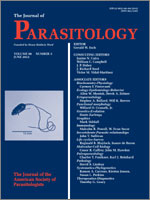A new proteocephalidean cestode is described from spot pangasius, Pangasius larnaudii (Siluriformes: Pangasiidae), from Tonle Sap Lake in Cambodia and a new genus, Pangasiocestus, is proposed to accommodate it. The genus is placed in the Gangesiinae because its scolex possesses a large rostellum-like apical organ and its genital organs (testes, ovary, vitellarium, and uterus) are situated in the medulla, with some vitelline follicles paramuscular. Pangasiocestus romani n. gen. and n. sp., the type and only species of the new genus, is characterized mainly by its rosette-like scolex composed of 4 lobes bearing a small sucker in their center, and the apical part with a large, discoidal, rostellum-like apical organ devoid of hooks, by weakly developed inner longitudinal musculature formed by very few isolated muscle fibers, uneven size of testes in immature and mature proglottids, with lateral testes smaller and more dense than median ones, by very narrow lateral bands of vitelline follicles, formed usually by single follicles, and by the vagina anterior to the cirrus sac. This is the first proteocephalidean cestode from a pangasiid catfish identified to the species level (proteocephalidean cestodes from 3 Pangasius spp. reported in an unpublished account from Vietnam, misidentified as Proteocephalus osculatus (Goeze, 1782) [ = Glanitaenia osculata], are not considered).
How to translate text using browser tools
1 June 2012
A New Genus and Species of Proteocephalidean Tapeworm (Cestoda) From Pangasius larnaudii (Siluriformes: Pangasiidae) In Southeast Asia
Tomáš Scholz,
Alain de Chambrier
ACCESS THE FULL ARTICLE

Journal of Parasitology
Vol. 98 • No. 3
June 2012
Vol. 98 • No. 3
June 2012




